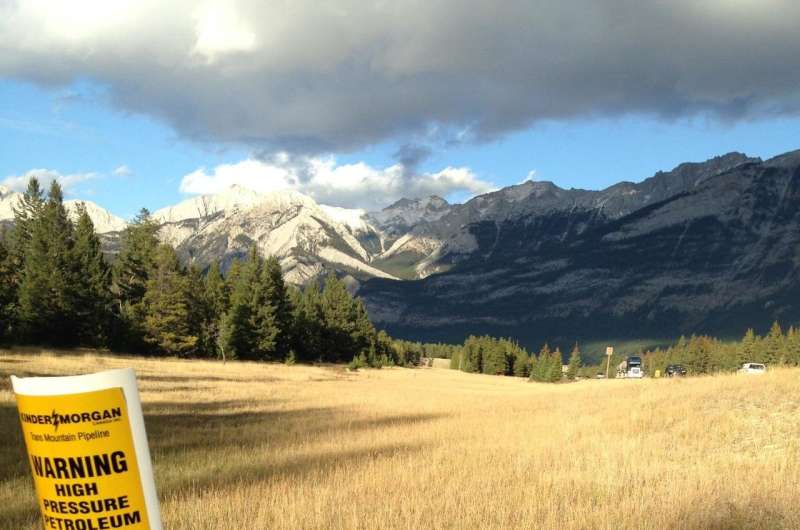Jasper National Park, Canada: view along the underground TransMountain pipeline. As a result of the impacts from a project to expand the pipeline, the developer provided a combination of offsets for habitat loss and additional conservation actions to increase ecological connectivity. Credit: Dr. Joseph W. Bull
New data has found that natural habitats occupying an area larger than Greece have been created to offset economic developments. This data could eventually provide a basis to help improve our understanding of the benefits of protecting and preserving wildlife. Called 'biodiversity offsets', man-made conservation areas are created to compensate for economic developments and are a growing trend.
They include major industrial projects like the Oyu Tolgoi copper mine in Mongolia and the Bujagali hydropower project in Uganda and at the other end of the scale, grassland restoration offsets only one hectare in size to compensate for housing developments in the UK. Until now, no one has had enough information to assess whether they work on an international scale.
Dr. Joseph W. Bull, a conservation scientist at University of Kent worked with Dr. Niels Strange from the University of Copenhagen to collate data on over ten thousand examples of nature sites created specifically to compensate for industrial impacts.The researchers found that across the world businesses are offsetting their development at a 'rapid rate' - from international corporations to smallscale landowners. The researchers also found there were more offsets than they expected—12,983 projects across 74 countries.
Dr. Bull said: 'This is the start of something major. Biodiversity offsets are being implemented very quickly despite being quite a recent policy idea. More than 153,000 square kilometres is a big chunk of land and—for the first time—we now have a dataset that can and will be used by two hundred countries across the world to refine "no net loss" policies, seeking to protect our natural environment.'
'No Net loss' policies are the point at which the project-related impacts on biodiversity are balanced by measures taken to avoid and minimize their impacts.
Such a global dataset is the prerequisite for assessing how well offsets compensate for biodiversity impacts associated with economic development, adds Dr. Strange.
The data also showed that emerging economies (particularly in South America) were more dominant in terms of global offsetting and most projects are very small. However, the researchers also note that the overwhelming majority (99.7%) of projects are implemented by law rather than on a voluntary basis.
The data is being made available to the Global Inventory on Biodiversity Offset Policies (GIBOP), currently being officially promoted at the thirteenth meeting of the international Convention on Biological Diversity, to be attended by up to 196 member countries in Egypt from the 17th-29th November 2018.
The global extent of biodiversity offset implementation under no net loss policies, by Joseph W. Bull and Niels Strange, is published in Nature Sustainability.
More information: Joseph William Bull et al, The global extent of biodiversity offset implementation under no net loss policies, Nature Sustainability (2018). DOI: 10.1038/s41893-018-0176-z
Journal information: Nature Sustainability
Provided by University of Kent























